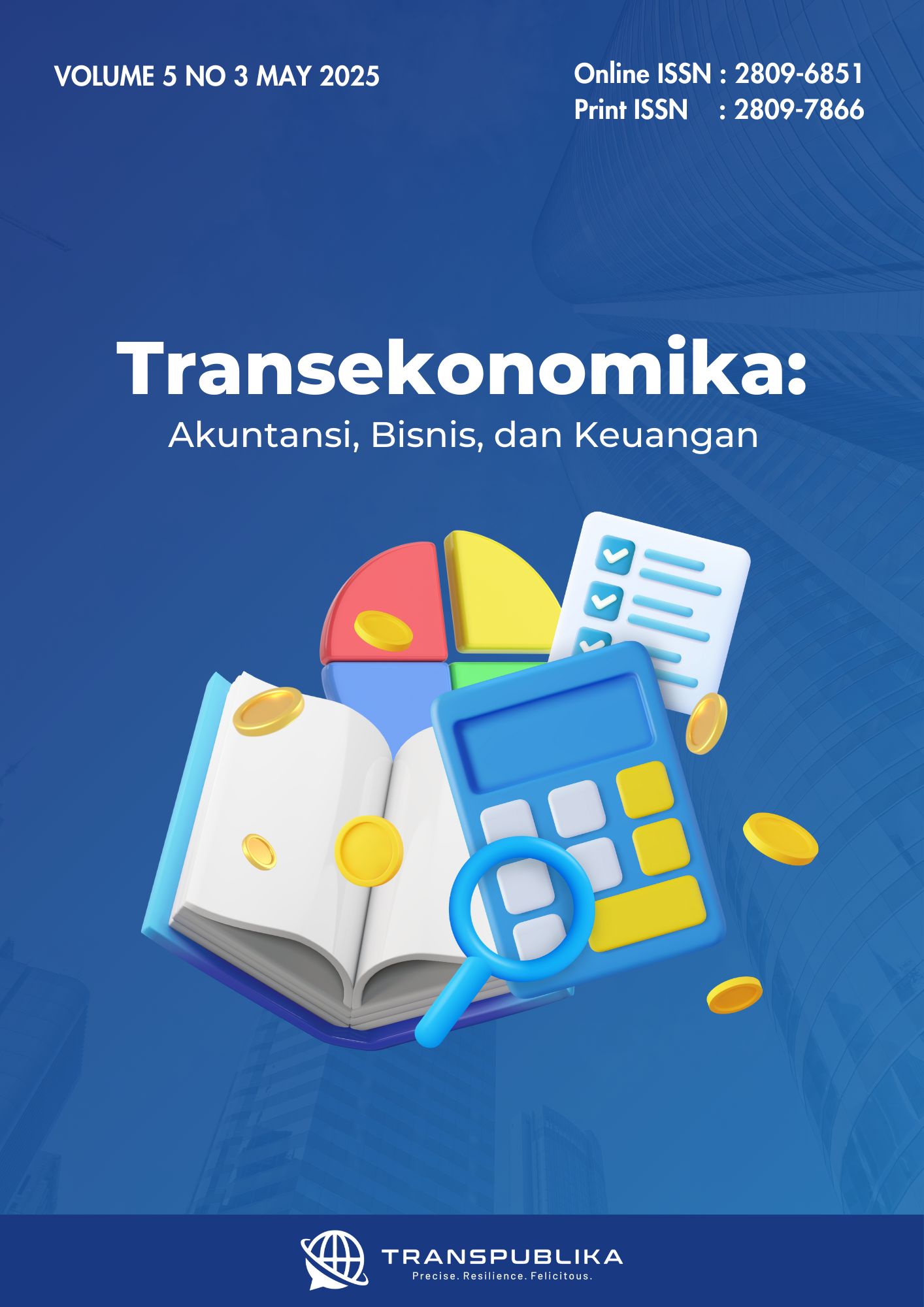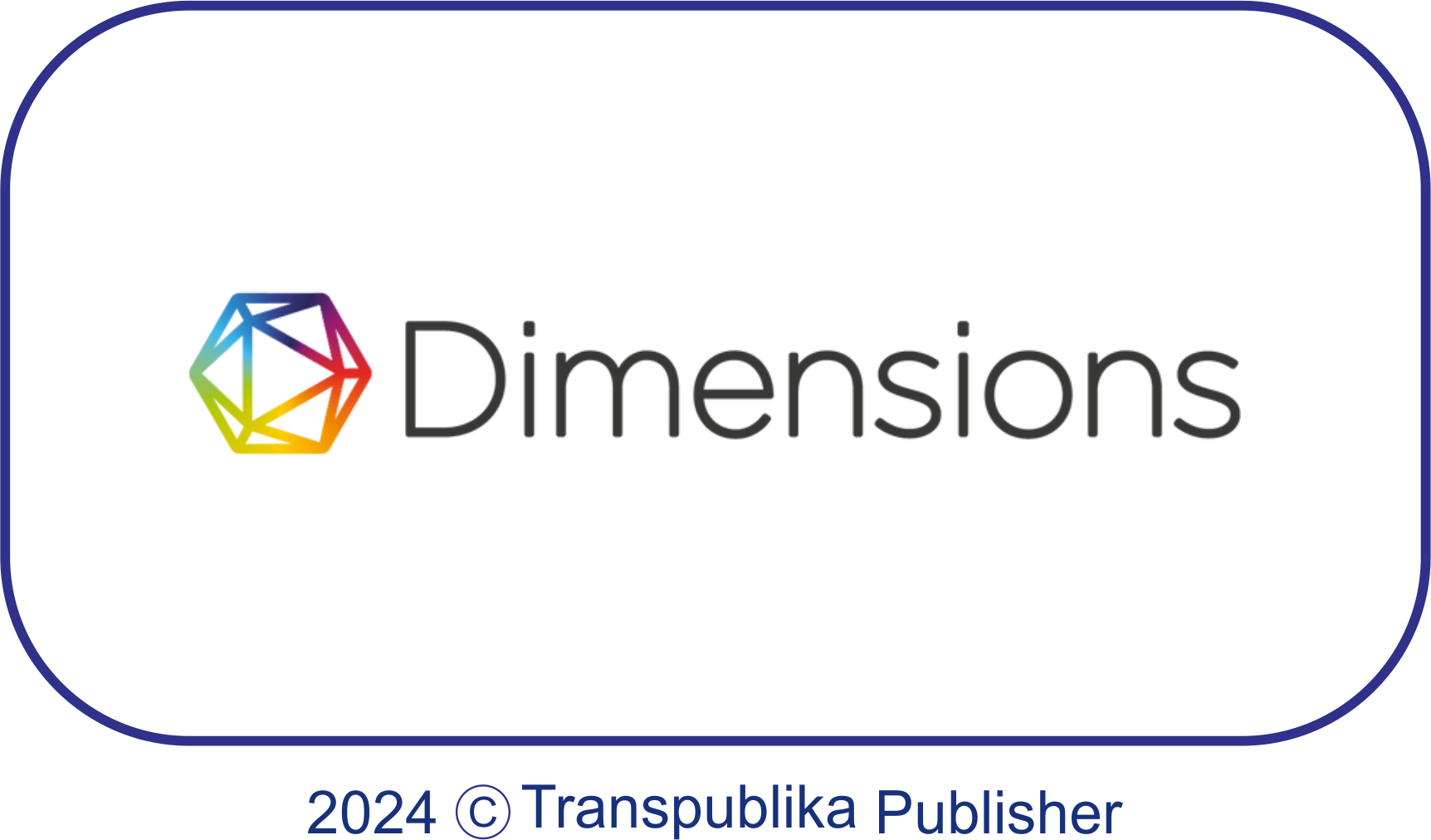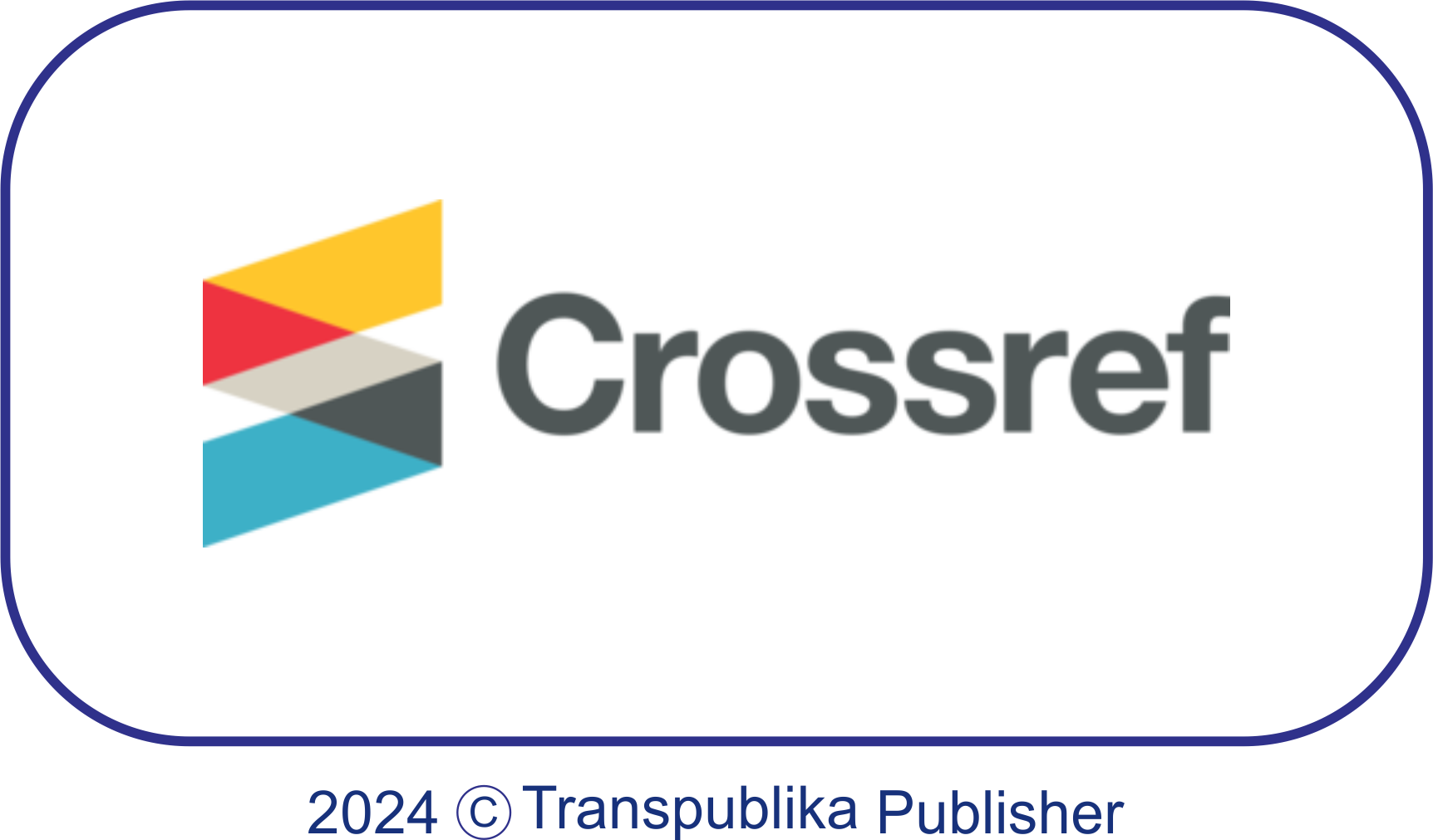Analysis of Leading Sector Shifts in Buol District
Abstract
Buol Regency has had a dynamic economic development since its separation from Tolitoli Regency. However, the non-optimal utilization of sectoral potential and the imbalance of contributions between sectors encourage the need to identify leading sectors as the basis for regional development policies. This study aims to analyze the regional economic structure, identify the basic sectors through Location Quotient analysis, and evaluate sectoral competitiveness with the Shift Share approach during the 2014-2023 period. The analysis methods used include Location Quotient to determine the base/non-base sector and Shift Share to evaluate the growth and competitive advantage of economic sectors. The Location Quotient analysis discover that Buol Regency has a number of economic sectors that have the potential to become leading sectors, such as Agriculture, Forestry and Fisheries; Water Supply; Waste Management, Waste, and Recycling; and other sectors that show Location Quotient (LQ) values greater than 1, indicating a positive contribution to the regional economy. Conversely, sectors with LQ values below 1 (Mining, Processing Industry, Electricity/Gas, Construction, and others) represent non-leading sectors, highlighting development challenges in Buol Regency. Shift Share analysis (2014-2023) reveals no significant economic structural shift, with the economy remaining primarily dependent on agriculture and fisheries despite some positive developments in other sectors. Economic structural shift would typically manifest as increased non-primary sector activity and reduced dependence on natural resource-based sectors. These findings identify priority sectors for regional economic policy. This research uniquely combines two analytical methods to assess sectoral dynamics in Buol—an approach rarely applied in eastern Indonesia's district-level studies.
Downloads
References
Abadi, M., Zahrah, Z., Puhakka-Tarvainen, H., & Katsume, H. (2024). Analysis of Economic Development on West Coast Regency, Indonesia, based on Location Quotient (LQ) and Shift Share (SS). Journal of Economics, Innovative Management and Entrepreneurship, 2(1), 71–81. https://doi.org/10.59652/jeime.v2i1.176
Arsyad, M., Yunus, S. R., Lanuhu, N., Jamil, M. H., & Alim, N. (2021). An analysis of progressive sectors: agriculture position. IOP Conference Series: Earth and Environmental Science, 681(1), 12079. https://doi.org/10.1088/1755-1315/681/1/012079
Azaki, N. (2024). Location Quotient and Shift Share Analysis for Sragenâ€TMs Economic Potential. Journal of Transformative Governance and Social Justice, 2(1), 11–24. https://doi.org/10.26905/j-tragos.v2i1.11215
Bosquez, V. A. (2023). Rural tourism prospects on the example of communities of Parroquia Salinas in Guaranda, Ecuador. Economic Annals-XXI, 204(7), 45–49. https://doi.org/10.21003/ea.V204-06
Bressanelli, G., Visintin, F., & Saccani, N. (2022). Circular Economy and the evolution of industrial districts: A supply chain perspective. International Journal of Production Economics, 243, 108348. https://doi.org/10.1016/j.ijpe.2021.108348
Chernenko, I. M. (2024). Evaluating eco-and human capital efficiency in Russian regions: insights from subjective well-being indicators in the context of geo-economic fragmentation. R-Economy, 10(2), 137–158. https://doi.org/10.15826/recon.2024.10.2.009
D’Adamo, I., Gastaldi, M., Imbriani, C., & Morone, P. (2021). Assessing regional performance for the Sustainable Development Goals in Italy. Scientific Reports, 11(1), 24117. https://doi.org/10.1038/s41598-021-03635-8
Drozdowski, G. (2024). Sustainable tourism as a driver of green infrastructure transformation: Case study of districts in Poland in the years 2010-2020. In Contemporary Marketing and Consumer Behaviour in Sustainable Tourism (pp. 192–207). https://doi.org/10.4324/9781003388593-14
Handayani, F., Syafruddin, S., & Pamungkas, B. D. (2023). Analisis Potensi Ekonomi Kabupaten Sumbawa Tahun 2016-2021. Jurnal Ekonomi & Bisnis, 11(3), 406–420. https://doi.org/10.58406/jeb.v11i3.1372
Herath Bandara, S. J. (2024). Regional Workforce Dynamics in West Virginia: Insights from Shift-Share and Location Quotient Analysis. Economies, 12(11), 290. https://doi.org/10.3390/economies12110290
Herrera Martheyn, O. E., & Valero Valencia, G. A. (2023). Análisis del sector minero-energético en Norte de Santander, mediante la metodología Shift-Share para el periodo 2005-2014. Gestión y Desarrollo Libre, 4(7). https://doi.org/10.18041/2539-3669/gestionlibre.7.2019.8133
Irmansyah, M. (2024). Analisis Sektor Unggulan yang Ada di Kabupaten Mojokerto Jawa Timur. Jurnal Dinamika Ekonomi Pembangunan, 2(1), 7–13. https://doi.org/10.33005/jdep.v2i1.86
Khodakivska, O. V. (2021). Formation of programs for integrated socio-economic development of united territorial communities, taking into account the risks of the COVID-19 pandemic. Ekonomika APK, 28(5), 6–16. https://doi.org/10.32317/2221-1055.202105006
Khoirunnisa, I., Ratih, A., Ciptawaty, U., Wahyudi, H., & Murwiyati, A. (2024). Analisis Sektor Unggulan Pendukung Pertanian Melalui Pendekatan Lq Dan Shift Share Di Sumatera. Jurnal Ekonomika Dan Bisnis (JEBS), 4(5), 1062–1070. https://doi.org/10.47233/jebs.v4i5.2079
Liu, Y., Liu, M., Wang, G., Zhao, L., & An, P. (2021). Effect of environmental regulation on high-quality economic development in China—An empirical analysis based on dynamic spatial durbin model. Environmental Science and Pollution Research, 28(39), 54661–54678. https://doi.org/10.1007/s11356-021-13780-2
Lv, C., Bian, B., Lee, C.-C., & He, Z. (2021). Regional gap and the trend of green finance development in China. Energy Economics, 102, 105476. https://doi.org/10.1016/j.eneco.2021.105476
Maspaitella, M., & Parinussa, S. M. (2021). Applying Location Quotient and Shift-Share Analysis in Determining Leading Sectors in Teluk Bintuni Regency. Journal of Developing Economies, 6(1), 55. https://doi.org/10.20473/jde.v6i1.22182
Montanía, C. V, Márquez, M. A., Fernández‐Núñez, T., & Hewings, G. J. D. (2024). Toward a more comprehensive shift‐share analysis: An illustration using regional data. Growth and Change, 55(1), e12693. https://doi.org/10.1111/grow.12693
Muljanto, M. A. (2021). Analisis Sektor Unggulan Dalam Pembangunan Daerah di Kabupaten Sidoarjo. Jurnal Manajemen Keuangan Publik, 5(2), 169–181. https://doi.org/10.31092/jmkp.v5i2.1386
Nagel Paiva, C. A., & Jannuzzi, P. (2022). Indicadores Socioeconômicos E Análise Regional : Fundamentos Da Centralidade Do Quociente Locacional / Socioeconomic Indicators And Regional Analysis: Fundamentals Of Location Quotient Centrality. Informe GEPEC, 26(3). https://doi.org/10.48075/igepec.v26i3.29569
Nasrullah, A., Ratih, A., & Putri, R. M. (2024). Location Quotient Analysis Tourism Support Sector in Lampung. International Journal Of Education, Social Studies, And Management (IJESSM), 4(2), 792–804. https://doi.org/10.52121/ijessm.v4i2.382
Neethling, R. J., Kleynhans, E. P. J., & Mncayi, P. (2023). A regional analysis of the competitiveness of industries in the Nelson Mandela Bay Metropolitan Municipality, South Africa. Local Economy, 38(2), 119–138. https://doi.org/10.1177/02690942231191988
Negara, A. K. K., & Putri, A. K. (2020). Analisis Sektor Unggulan Kecamatan Toboali Dengan Metode Shift Share Dan Location Quotient. Equity: Jurnal Ekonomi, 8(1), 24–36. https://doi.org/10.33019/equity.v8i1.11
Prabowo, D. (2023). Analysis Of The Leading Sector Of ‘Kota Pelajar’ With Location Quotient Method And Klassen Typology. Jurnal Pajak Dan Keuangan Negara (PKN), 5(1), 75–82. https://doi.org/10.31092/jpkn.v5i1.2251
Pribadi, Y. (2021). Pengukuran Daya Saing Kabupaten Lampung Tengah: Metode Location Quotient Dan Shift-Share Analysis. Inovasi Pembangunan : Jurnal Kelitbangan, 9(03), 299. https://doi.org/10.35450/jip.v9i03.264
Rana, S., Rahman, A., & Mokaddes Ahmed Dipu, S. M. (2023). Analysis on industry cluster for regional development in a haor region of Bangladesh: A location quotient analysis. Bangladesh Journal of Veterinary and Animal Sciences, 10(02). https://doi.org/10.60015/bjvas/V10I2A6
Sapriadi, S., & Hasbiullah, H. (2015). Analisis penentuan sektor unggulan perekonomian Kabupaten Bulukumba. Jurnal Iqtisaduna, 1(1), 53–71. https://doi.org/10.24252/iqtisaduna.v1i1.1155
Saragih, J. R., Purwoko, A., & Asaad, M. (2024). Classifying Economic Sectors to Improve Regional Development Priorities in Indonesia. International Journal of Sustainable Development & Planning, 19(5). https://doi.org/10.18280/ijsdp.190515
Sari, P., Elmizan, G., Desweni, S., Yolamalinda, Y., & Putri, Y. (2022). Potential Analysis of The Economic Sector in Efforts to Increase Economic Growth with Location Quotient (LQ) Analysis. https://doi.org/10.4108/eai.14-12-2021.2318343
Satrianto, A., Amar, S., & Ikhsan, A. (2022). Analysis of the Leading Sector in Underdeveloped Areas of West Sumatera, Indonesia. Journal of Social Economics Research, 9(3), 161–178. https://doi.org/10.18488/35.v9i3.3182
Sinurat, S. U., & Pakpahan, E. (2023). Analsis sektor unggulan Kabupaten Tapanuli Utara. VALUE, 3(2), 148–162. https://doi.org/10.36490/value.v3i2.622
Situmorang, M. K. (2024). Economic growth profile of the manokwari district mining sector using shift share analysis. INTAN Jurnal Penelitian Tambang, 7(1). https://doi.org/10.56139/intan.v7i1.137
Takalumang, V. Y. (2018). Analisis Sektor Ekonomi Unggulan Dalam Mendorong Pertumbuhan Ekonomi Kabupaten/Kepulauan Sangihe. Jurnal Berkala Ilmiah Efisiensi, 18(01), 1–12. https://ejournal.unsrat.ac.id/index.php/jbie/article/view/19154
Tao, Z., Zhang, Z., & Shangkun, L. (2022). Digital economy, entrepreneurship, and high-quality economic development: Empirical evidence from urban China. Frontiers of Economics in China, 17(3), 393. https://doi.org/10.3868/s060-015-022-0015-6
Wahyudi, H., Sunarmo, S., Majid, R., Lestari, W. R., & Suparta, I. W. (2024). Changes in Economic Structure and Basic Sectors with Freeway Infrastructure: A Study from Indonesia. WSEAS Transactions on Environment and Development, 20, 1098–1109. https://doi.org/10.37394/232015.2024.20.100
Wang, Z., & Wei, W. (2021). Regional economic resilience in China: Measurement and determinants. Regional Studies, 55(7), 1228–1239. https://doi.org/10.1080/00343404.2021.1872779
Xanthos, G., Zopounidis, C., Garefalakis, A., Lemonakis, C., & Passas, I. (2022). Distinguish regional performance with the use of shift-share analysis and MCDA methods: a gross value added perspective. Operational Research, 22(2), 1363–1376.
Zainutdinov, S., & Madrakhimov, U. (2020). Sustainability is the Main Driver of Economic Growth. Bulletin of Science and Practice, 6(8). https://doi.org/10.33619/2414-2948/57/13
Zhou, G., Zhu, J., & Luo, S. (2022). The impact of fintech innovation on green growth in China: Mediating effect of green finance. Ecological Economics, 193, 107308. https://doi.org/10.1016/j.ecolecon.2021.107308
Zhou, Z., Sun, X., Zhang, X., & Wang, Y. (2022). Inter-regional ecological compensation in the Yellow River Basin based on the value of ecosystem services. Journal of Environmental Management, 322, 116073. https://doi.org/10.1016/j.jenvman.2022.116073
Copyright (c) 2025 Dini Aulia Putri, Eko Jokolelono, Rita Yunus, Santi Yunus, Shohib Hakimi

This work is licensed under a Creative Commons Attribution 4.0 International License.








.png)







.png)


.png)

.png)















